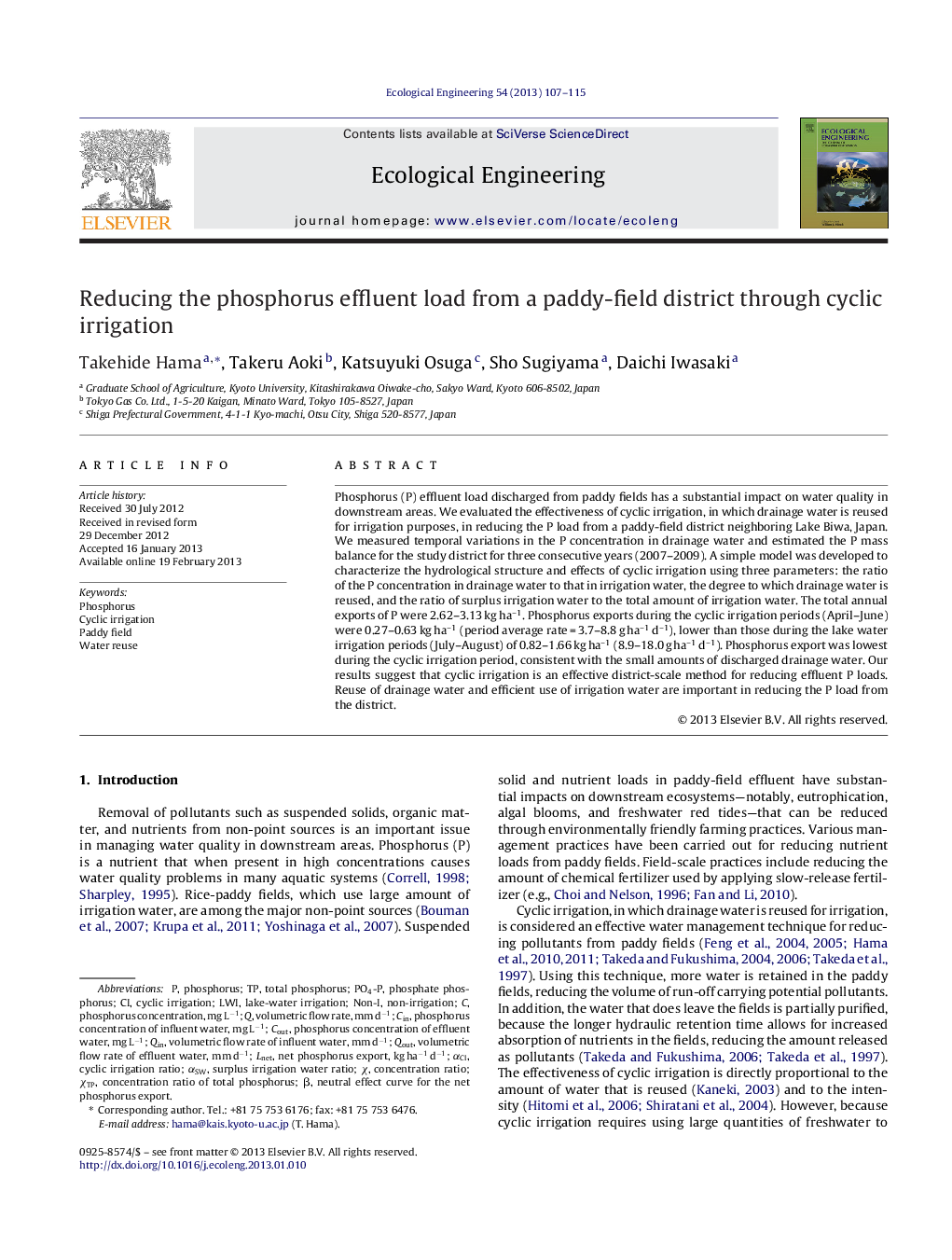| Article ID | Journal | Published Year | Pages | File Type |
|---|---|---|---|---|
| 4389799 | Ecological Engineering | 2013 | 9 Pages |
Phosphorus (P) effluent load discharged from paddy fields has a substantial impact on water quality in downstream areas. We evaluated the effectiveness of cyclic irrigation, in which drainage water is reused for irrigation purposes, in reducing the P load from a paddy-field district neighboring Lake Biwa, Japan. We measured temporal variations in the P concentration in drainage water and estimated the P mass balance for the study district for three consecutive years (2007–2009). A simple model was developed to characterize the hydrological structure and effects of cyclic irrigation using three parameters: the ratio of the P concentration in drainage water to that in irrigation water, the degree to which drainage water is reused, and the ratio of surplus irrigation water to the total amount of irrigation water. The total annual exports of P were 2.62–3.13 kg ha–1. Phosphorus exports during the cyclic irrigation periods (April–June) were 0.27–0.63 kg ha–1 (period average rate = 3.7–8.8 g ha–1 d–1), lower than those during the lake water irrigation periods (July–August) of 0.82–1.66 kg ha–1 (8.9–18.0 g ha–1 d–1). Phosphorus export was lowest during the cyclic irrigation period, consistent with the small amounts of discharged drainage water. Our results suggest that cyclic irrigation is an effective district-scale method for reducing effluent P loads. Reuse of drainage water and efficient use of irrigation water are important in reducing the P load from the district.
► We evaluated the effectiveness of cyclic irrigation in reducing phosphorus load from a paddy-field district. ► We estimated the phosphorus mass balance for the district for three consecutive years (2007–2009). ► Phosphorus exports during the cyclic irrigation periods (April–June) were 0.27–0.63 kg ha–1. ► The hydrological structure and effects of cyclic irrigation can be simply characterized using three parameters. ► The reduction of phosphorus load in cyclic irrigation is mainly due to a decrease in the water discharged from the district.
